Service by appointment only
Call 020 7736 0046
Call 020 7736 0046 To book
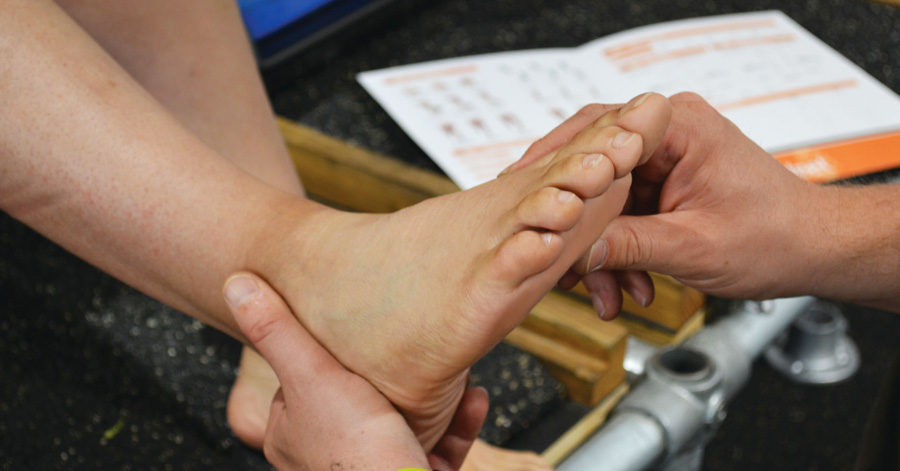
1. WEAR THE RIGHT SHOES
In the first instance, it’s important to make sure you’re wearing the correct running shoes for your foot length, shape and type/function.
SHOE SIZE
From one brand to another the length can vary for the same size due to how the shoes are developed and shaped, and the conversion from US to EU to UK sizing that’s used. So seek expert advice and try them on if unsure.
RULE OF THUMB
We have found that the best fit for ultramarathons is often achieved by wearing a half to one size larger than your everyday shoe size, as feet can swell quite dramatically during the course of a race.
The key is allowing about a good thumb width of space between the end of the toes and the front of the shoe irrespective of the manufactures size. This allows for your feet to swell as they warm up while running or walking. A properly fitting running shoe should feel snug in the heel and midfoot, with room to wiggle the toes.
GAIT TYPE
As you run your feet should roll forward from initial contact to toe-off. However, many people find that either their ankles roll inwards excessively (known as pronation), or roll outwards (known as supination).
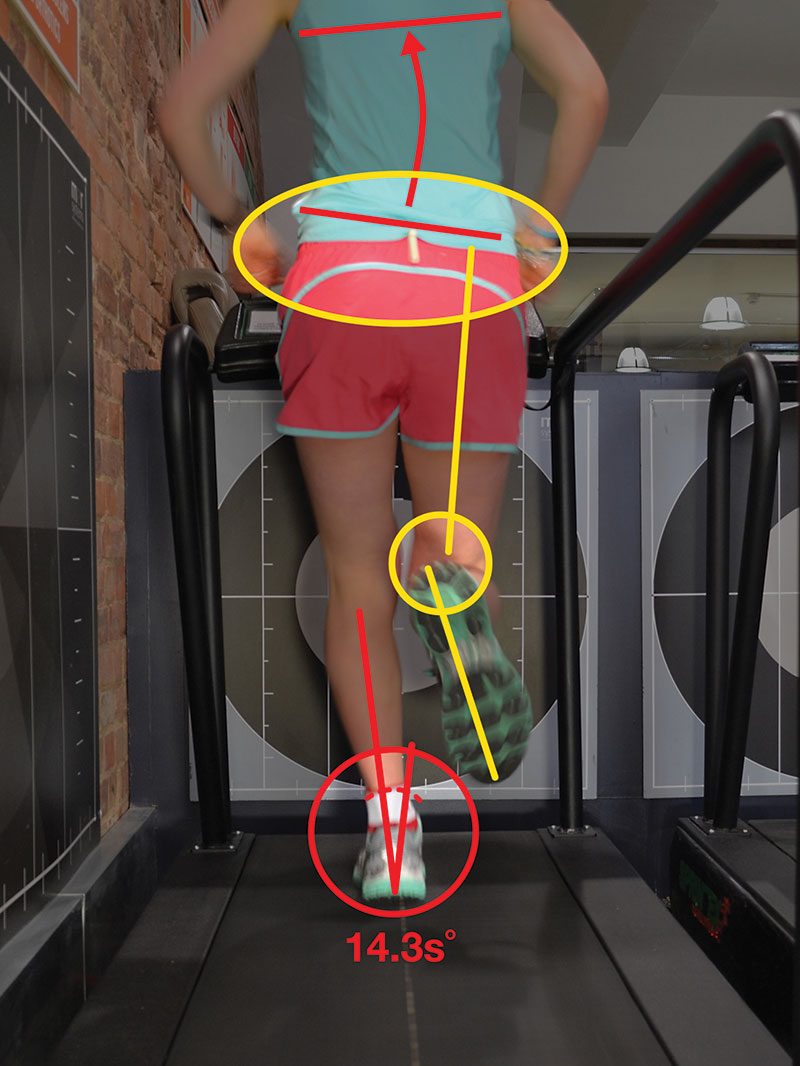
A foot with good alignment generally requires a ‘neutral’ shoe whilst a tendency for ankles to roll in or out usually indicates the need for more supportive or ‘stability’ shoe.
You can often tell what your gait type is by looking at your old running shoes to see where they are most worn. Excess wearing on the edges is a tell-tale sign of an unstable foot. Of course, a professional gait assessment is the best way to ensure you are in the right type of shoe for your foot shape and type.
BREAKING IN
It is vital that you have properly broken-in the shoes you are going to wear for the event and have tried them with the socks and insoles you intend to use. The shoes will give and adapt to your feet during the breaking-in period which will significantly reduce the risk of blisters and or you might find you need a different shoe or more specialist custom fitting to ensure you can complete a longer distance event.
See Profeet’s breaking in guidelines for more information on how to break in a new shoe.
> profeet.co.uk/break-in
2. FINE TUNE THE SHOE FIT USING CUSTOM OR SPORTS INSOLES
Standard manufacturer running and walking boot insoles are made to achieve two things; to feel soft and comfortable when you first try the shoes on, and be very cheap to make. Its therefore worth investing in a better insoles that will support and work with your foot and the shoe as you run/walk.
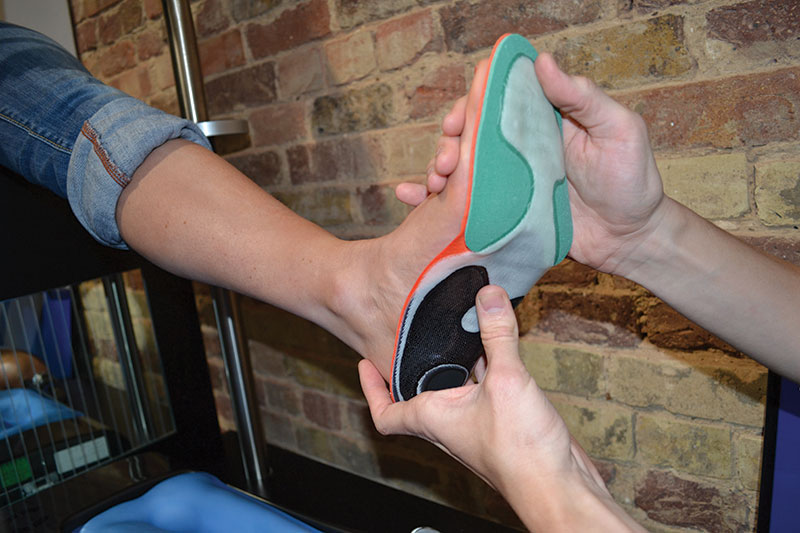
In particular, custom insoles (orthotics) can fine tune the fit and function of your shoes to suit your individual needs. Most professional athletes use some form of custom insoles.
But if you don’t want to invest in a custom insole then there are some off-the-shelf insoles that can still help.
3. TRY LACING YOUR SHOES DIFFERENTLY
Believe it or not there is more than one way to lace a shoe. In fact, there are many variations to help adjust fit to suit your foot type. Finding the right lacing pattern can help with comfort especially in an ultra event.
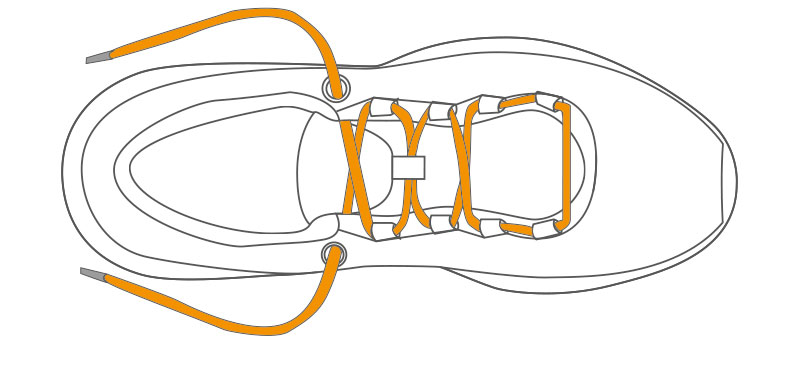
Wide forefoot
Leave the first eyelets nearest the toes unlaced and start lacing from the 2nd eyelets taking pressure off the forefeet.
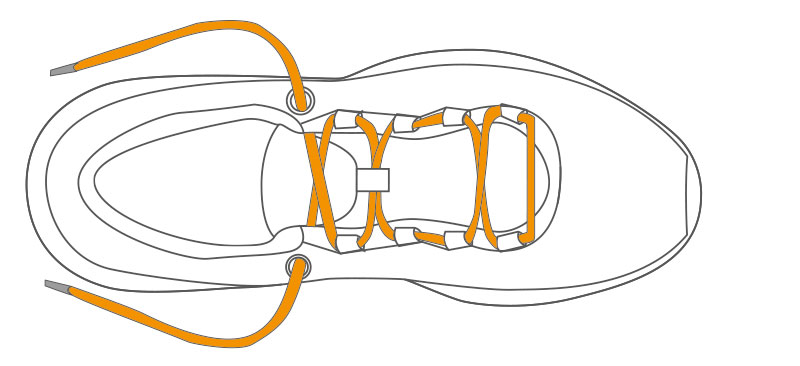
High arch
High arches and volume feet can be constricted by a regular lacing technique leading to pain or loss of circulation. The solution is to create a window in between eyelets 2 – 4 to create some space to allow the foot to flex comfortably. See our video guide for details.
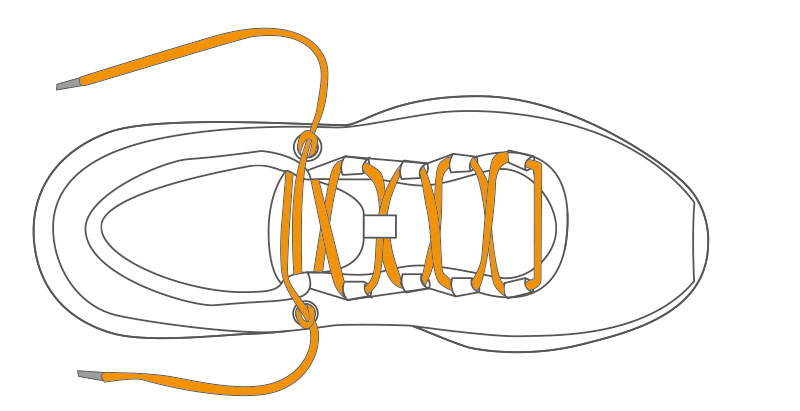
Narrow heel
A narrow heel can benefit from a racer’s lock or heel lock. There are 2 additional holes in the ankle cuff of running shoes, one each side. A loop can be created and used to thread the lace to create greater hold around the heel. See Profeet’s video guide for details
4. WEAR THE RIGHT SOCKS
Investing in technical running or walking socks will improve comfort and reduce the risk of blisters.
Made from soft, durable and moisture-wicking fibres they manage sweat by drawing moisture away from the foot and also help to regulate foot temperature. Whatever you do – don’t wear old fashioned cotton sports socks or everyday socks as these are known to significantly increase the risk of blisters. > profeet.co.uk/socks
Technical running and walking socks usually have a deeper knit under the ball of the foot and heel to improve comfort and cushioning. Some have a more elastic knit around the foot to provide compressions and support. It is worth experimenting as some people prefer a thinner sock and others a thicker more cushioned sock. It can of course depend on how much space you have in your shoes. Once you’ve found your fit, you’ll be wondering how you ever managed without them!
Most technical socks are made from synthetic fibres, but some also have merino wool content. Don’t be deceived by the rougher texture of merino, for some people they help to reduce rubbing and blisters.
5. PHYSICAL PREPARATION
It is worth following a training plan which will usually involve increasing your mileage over a few months in order to prepare for your ultra-event.
But don’t forget that strength and conditioning is also important. Often some simple exercises can help with preparation and improve your movement and therefore comfort during the event.
6. AVOIDING BLISTERS
Even if you have the right shoes, insoles, and socks, and have worn them in and followed a rigorous training plan, blisters can still happen and affect your event.
Blisters usually happen due to shearing forces in the layers of skin caused by repeated rubbing as we run or walk. Our advice on avoiding blisters by preparing your skin is as follows:
Toughen up the skin
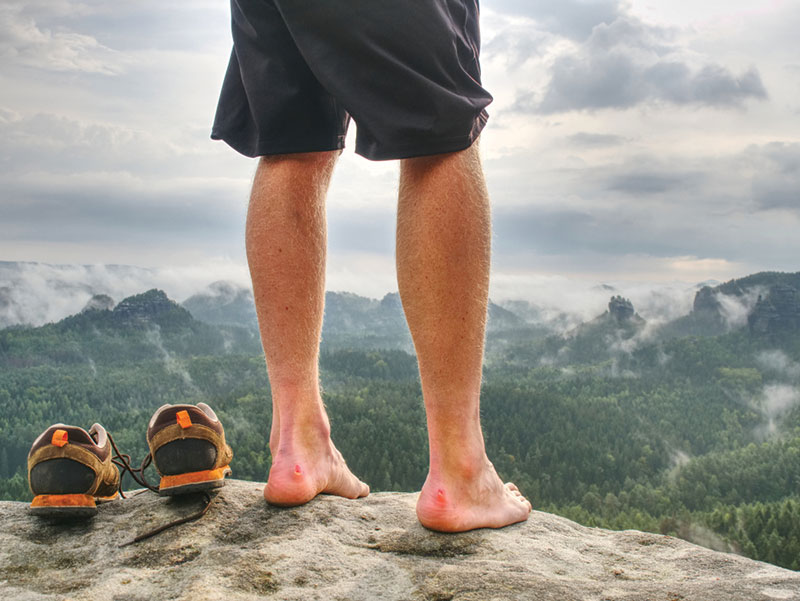
Toughen up the skin
Feet can adapt over time to increase their ability to withstand shearing stress in the skin layers, but research suggests that it can take between 6 weeks and 6 months to toughen feet up, so plan ahead.
How to toughen up the skin and what to use:
- Spend time on your feet – follow a training plan and build mileage on your feet
- Use Preparations such as
- Zinc sulphate
- A potassium permanganate footbath
- Surgical spirit
How to maintain suppleness
- Bear in mind that when toughening up the feet we do not want to sacrifice suppleness
- Maintain your feet and skin with creams which increase the elasticity of the skin whilst not increasing the moisture – moisture is BAD!!
- Two of our favorites are:
- NOK (shea butter) cream
- Coco butter
> See our comprehensive blister guide
If you’d like to discuss how Profeet Custom Fitted Footwear can help you, speak to our team on 020 7736 0046 or email info@profeet.co.uk
OUR SERVICE IS BY APPOINTMENT ONLY
Profeet’s services are by appointment only, please call or book online in advance
